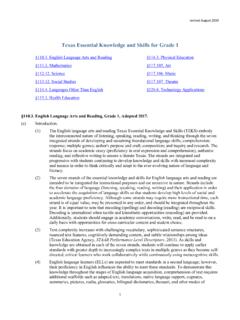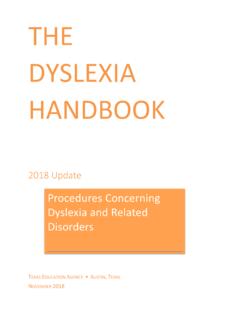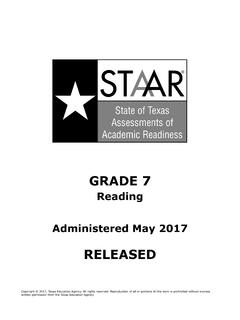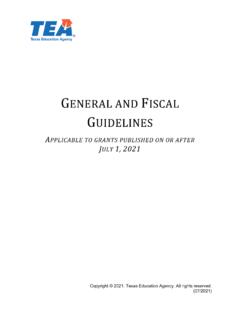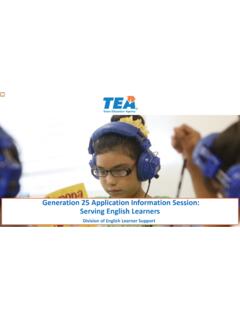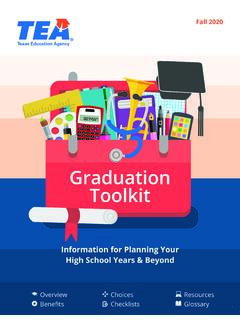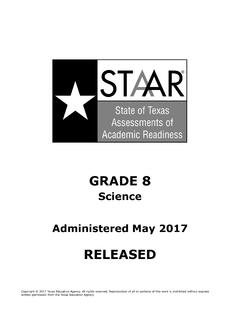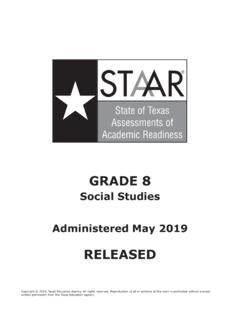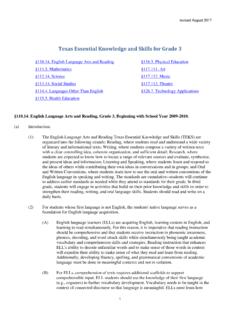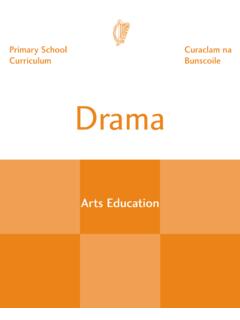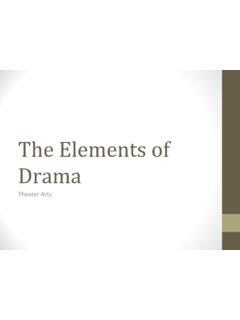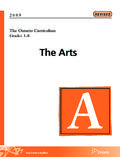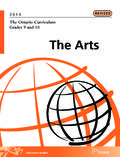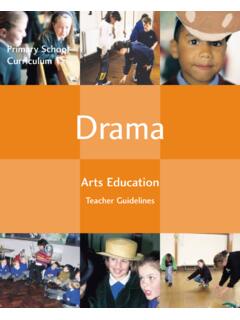Transcription of Texas Essential Knowledge and Skills for Grade 2
1 Revised August 2020 1 Texas Essential Knowledge and Skills for Grade 2 English Language Arts and Reading Mathematics Science Social Studies Languages Other Than English Health Education Physical Education Art Music Theatre Technology Applications English Language Arts and Reading, Grade 2, Adopted 2017. (a) Introduction. (1) The English language arts and reading Texas Essential Knowledge and Skills (TEKS) embody the interconnected nature of listening, speaking, reading, writing, and thinking through the seven integrated strands of developing and sustaining foundational language Skills ; comprehension; response; multiple genres; author's purpose and craft; composition; and inquiry and research.
2 The strands focus on academic oracy (proficiency in oral expression and comprehension), authentic reading, and reflective writing to ensure a literate Texas . The strands are integrated and progressive with students continuing to develop Knowledge and Skills with increased complexity and nuance in order to think critically and adapt to the ever-evolving nature of language and literacy. (2) The seven strands of the Essential Knowledge and Skills for English language arts and reading are intended to be integrated for instructional purposes and are recursive in nature.
3 Strands include the four domains of language (listening, speaking, reading, writing) and their application in order to accelerate the acquisition of language Skills so that students develop high levels of social and academic language proficiency. Although some strands may require more instructional time, each strand is of equal value, may be presented in any order, and should be integrated throughout the year. It is important to note that encoding (spelling) and decoding (reading) are reciprocal Skills . Decoding is internalized when tactile and kinesthetic opportunities (encoding) are provided.
4 Additionally, students should engage in academic conversations, write, read, and be read to on a daily basis with opportunities for cross-curricular content and student choice. (3) Text complexity increases with challenging vocabulary, sophisticated sentence structures, nuanced text features, cognitively demanding content, and subtle relationships among ideas ( Texas Education Agency, STAAR Performance Level Descriptors, 2013). As Skills and Knowledge are obtained in each of the seven strands, students will continue to apply earlier standards with greater depth to increasingly complex texts in multiple genres as they become self-directed, critical learners who work collaboratively while continuously using metacognitive Skills .
5 (4) English language learners (ELLs) are expected to meet standards in a second language; however, their proficiency in English influences the ability to meet these standards. To demonstrate this Knowledge throughout the stages of English language acquisition, comprehension of text requires additional scaffolds such as adapted text, translations, native language support, cognates, revised August 2020 2 summaries, pictures, realia, glossaries, bilingual dictionaries, thesauri, and other modes of comprehensible input. ELLs can and should be encouraged to use Knowledge of their first language to enhance vocabulary development; vocabulary needs to be in the context of connected discourse so that it is meaningful.
6 Strategic use of the student's first language is important to ensure linguistic, affective, cognitive, and academic development in English. (5) Current research stresses the importance of effectively integrating second language acquisition with quality content area education in order to ensure that ELLs acquire social and academic language proficiency in English, learn the Knowledge and Skills , and reach their full academic potential. Instruction must be linguistically accommodated in accordance with the English Language Proficiency Standards (ELPS) and the student's English language proficiency levels to ensure the mastery of Knowledge and Skills in the required curriculum is accessible.
7 For a further understanding of second language acquisition needs, refer to the ELPS and proficiency-level descriptors adopted in Chapter 74, Subchapter A, of this title (relating to Required Curriculum). (6) Oral language proficiency holds a pivotal role in school success; verbal engagement must be maximized across Grade levels (Kinsella, 2010). In order for students to become thinkers and proficient speakers in science, social studies, mathematics, fine arts, language arts and reading, and career and technical education, they must have multiple opportunities to practice and apply the academic language of each discipline (Fisher, Frey, & Rothenberg, 2008).
8 (7) Statements that contain the word "including" reference content that must be mastered, while those containing the phrase "such as" are intended as possible illustrative examples. (b) Knowledge and Skills . (1) Developing and sustaining foundational language Skills : listening, speaking, discussion, and thinking--oral language. The student develops oral language through listening, speaking, and discussion. The student is expected to: (A) listen actively, ask relevant questions to clarify information, and answer questions using multi-word responses; (B) follow, restate, and give oral instructions that involve a short, related sequence of actions; (C) share information and ideas that focus on the topic under discussion, speaking clearly at an appropriate pace and using the conventions of language.
9 (D) work collaboratively with others by following agreed-upon rules for discussion, including listening to others, speaking when recognized, making appropriate contributions, and building on the ideas of others; and (E) develop social communication such as distinguishing between asking and telling. (2) Developing and sustaining foundational language Skills : listening, speaking, reading, writing, and thinking--beginning reading and writing. The student develops word structure Knowledge through phonological awareness, print concepts, phonics, and morphology to communicate, decode, and spell.
10 The student is expected to: (A) demonstrate phonological awareness by: (i) producing a series of rhyming words; (ii) distinguishing between long and short vowel sounds in one-syllable and multi-syllable words; (iii) recognizing the change in spoken word when a specified phoneme is added, changed, or removed; and revised August 2020 3 (iv) manipulating phonemes within base words; (B) demonstrate and apply phonetic Knowledge by: (i) decoding words with short, long, or variant vowels, trigraphs, and blends; (ii) decoding words with silent letters such as knife and gnat; (iii) decoding multisyllabic words with closed syllables; open syllables; VCe syllables; vowel teams, including digraphs and diphthongs; r-controlled syllables; and final stable syllables; (iv) decoding compound words, contractions, and common abbreviations; (v) decoding words using Knowledge of syllable division patterns such as VCCV, VCV, and VCCCV.
